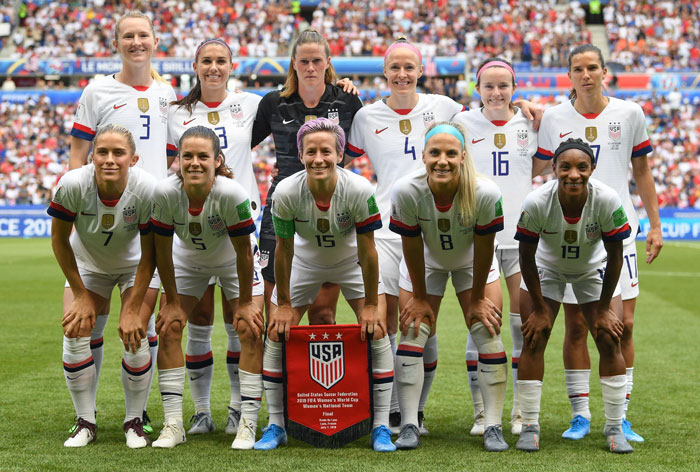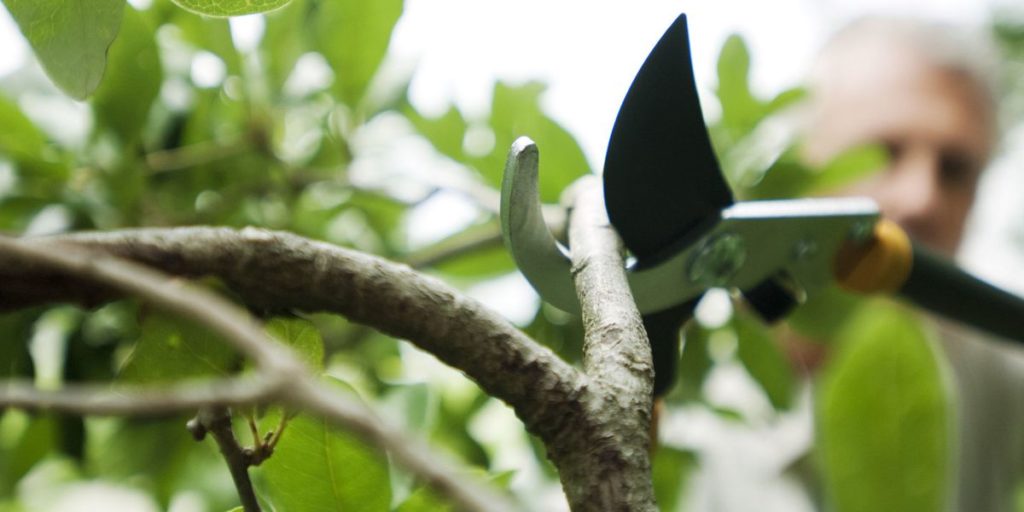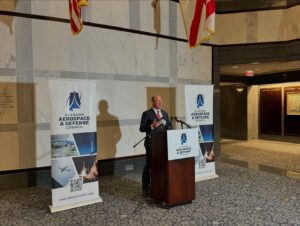Steve Flowers: 2020 races around the corner

Folks, don’t look now, but the 2020 Presidential Election is upon us. Indeed, as many as 21 Democratic aspirants are already announced and campaigning. They are quite a liberal group as you might expect. Leading the pack of Democrats trying to take Donald Trump out of the White House is an avowed, true socialist, Bernie Sanders. Behind ole Bernie are a host of ultra-liberal U.S. Senators who are socialists wannabes. They hail from either the left coasts of California or New England. Included in the pack of CNN/MSNBC/Stephen Colbert watchers are Elizabeth “Pocahontas” Warren of Massachusetts. She makes Teddy Kennedy look like a conservative. You also have Kamala Harris of California, Senator Cory Booker of New Jersey and losing Texas Senate candidate, Beto O’Rourke, in the race. Our own anomaly Democratic Senator Doug Jones really should run for president next year. He would have a much better chance of winning the Democratic nomination for President than winning a seat in the U.S. Senate from the Heart of Dixie. He has been a liberal Democrat in Alabama his entire adult political life. He has been the soul of the liberal Alabama Democratic Party for decades. He has campaigned and voted for George McGovern, Walter Mondale, Teddy Kennedy, Jesse Jackson, Barack Obama, Bill Clinton and Hillary Clinton. Since he has been in Washington for the past year, he has organized with and voted with Chuck Schumer and Nancy Pelosi. Therefore, he is just as liberal with a much lengthier liberal pedigree than all of the aforementioned liberal Democratic Senators in the race; plus he has a proven Civil Rights record. The scenario that occurred in last year’s special election to fill Jeff Sessions’s seat was a perfect storm that will never occur again. First of all, it was the only show in the country and the first opportunity for liberals all over the country to show their distaste for Donald Trump and the Republican Party. Having Judge Roy Moore as an additional lightning rod just added fuel to the fire. It attracted over $20 million of liberal, left-wing money to Doug Jones. He was able to out spend Moore 21 to 3. That is almost impossible to overcome, plus, with it being a Special Election it became a referendum on Doug Jones versus Roy Moore and the Republican vs Democratic delineation became obscured. During this race, Doug Jones built a national liberal fund-raising base from left-wing America, much like Beto O’Rourke did in Texas. They both have become national stars as Democrats in Red States. Although O’Rourke probably has an edge on Jones in looks and youth. However, recently, Jones appeared on the left leaning Democratic Stephen Colbert Show. Jones may very well be eyeing national politics. Doug Jones, as a lifelong stalwart Democrat, has worked diligently for the State and National Democratic party for most of his adult life. In recent months, he has tried to wrestle some control away from longtime Democratic dictator Joe Reed. It is practically impossible to understand what is going on in the State Democratic Party. Eventually, there may be a new vote on the party chairmanship. The National Democratic Party has mandated a new election due to the clandestine way that Nancy Worley was elected. The state hierarchy has ignored the National Party. There is no doubt that Joe Reed is still in control of the Alabama Democratic Party. You can bet your bottom dollar that he calls all the shots. My guess is that he has his horse picked out of the 21 Democratic presidential candidates. He asked California Senator, Kamala Harris, to be the keynote speaker at his Alabama Democratic Conference June annual event. Therefore, Senator Harris might be a good horse to bet on to win next year’s March third Alabama Democratic Presidential Primary. The Democratic Party in Alabama continues to be a big mess. The bottom line is that on the state level the Party is essentially irrelevant. The odds of a Democratic candidate for President carrying Alabama or a Democratic nominee winning any statewide race in the Heart of Dixie is slim to none. See you next week. Steve Flowers is Alabama’s leading political columnist. His weekly column appears in over 60 Alabama newspapers. He served 16 years in the state legislature. Steve may be reached at www.steveflowers.us.
Daniel Sutter: Battling on and off the field

The U.S. Women’s soccer team is fighting two battles this year. On the field in France they successfully defended their World Cup title. In March, team members sued the U.S. Soccer Federation for gender discrimination. The case highlights gender pay equity and potential discrimination by sports fans. Determining compensation is trickier than you might think, due to differences in numbers of games and whether either team is playing a World Cup. Court filings suggest that for an equivalent schedule, women are paid 62 percent less than men. If this is true, is it fair? If you think pay should depend on performance, the U.S. Women should make much more than our men. The Women have won four World Cup titles and Olympic Gold medals each; the Men have never won either and failed to qualify for the 2018 World Cup. If you think pay should depend on effort and hard work, equal pay probably seems fair. The members of both teams undoubtedly train and play extremely hard. Economists would focus on revenue generation by each team. Total player compensation across major professional sports leagues is generally 50 to 60 percent of revenue. Economics would find the pay differential fair if based on a revenue difference. Economics explains how athletes’ compensation depends on revenue, but is this fair? We can offer a fairness defense as follows. Participation on the national soccer teams, like all market activity, is voluntary. And fans choose voluntarily to attend games, watch on TV, and purchase merchandise. Voluntary participation means that events like the Women’s World Cup make the world a better place than otherwise. And pay differentials provide people an incentive to supply more labor, if possible. Sports economics also suggests why unequal pay may persist even with equal revenue. Competition between employers in labor markets drives salaries up to the value a worker generates. Competition in sports is less intense than other professions because athletes make so much more in their sport than other work. Salary caps and other measures can further limit bidding for players. U.S. Soccer could potentially indulge prejudices regarding gender and pay if desired. Whether the soccer pay gap is due to revenue is unclear. Gate revenue from women’s and men’s matches has been equal since 2015, but the gate is only one component of overall revenue. Litigation will likely reveal the truth. Let’s turn then to a more challenging question: do revenue differences reflect fan prejudice against women’s sports? The prize pool for the Women’s World Cup was $30 million, versus $400 million for the 2018 Men’s World Cup. Huge earnings differences also exist in professional basketball. In 2017-18, the average WNBA salary was $72,000, compared with a minimum NBA salary of $838,000. These enormous pay gaps are primarily due to differences in revenue. Do sports fans just not like watching women play? Economists have tested for racial discrimination using sports data, particularly focusing on salaries from within the same sport. Different sports leagues, to my mind, represent different products. Economists generally attach little moral significance to people’s preferences across products. Americans like football more than soccer, but so what? Such differences in preferences simply make the world more interesting. Differences in fan interest though may well be due to gender stereotypes and consequently be disturbing. Even so, separating gender stereotyping from other, less problematic, preferences would be difficult. Should we try to mandate equality in fan attendance and spending for the NBA and WNBA? Should companies have to sponsor both the men’s and women’s national soccer teams for the same amount? The long run provides reason for optimism. Women’s sports are relatively new – the WNBA is 21 years old and the first Women’s World Cup was held in 1991 – and sports loyalties are often formed young. As gender stereotypes break down, fewer fans will be biased. The 2019 World Cup’s record TV audiences worldwide demonstrate progress. When the revenue gap between men’s and women’s soccer disappears, if it still exists, equality in pay should follow. Daniel Sutter is the Charles G. Koch Professor of Economics with the Manuel H. Johnson Center for Political Economy at Troy University and host of Econversations on TrojanVision. The opinions expressed in this column are the author’s and do not necessarily reflect the views of Troy University.
J. Pepper Bryars: Like Chilton County’s peach trees, Alabama’s occupational license laws need regular pruning

Motorists who travel I-65 between Birmingham and Montgomery during summertime often enjoy the tradition of stopping in Clanton for a freshly-picked basket of Chilton County’s famous peaches. There’s something special about that part of Alabama, a Goldilocks zone that produces those thick, juicy, tasty treats. Not too cold. Not too hot. Just right. Well, that and an awful lot of pruning. Thing is, peach trees need to be cut back annually so that they can continually produce the best and most fruit. A snip here. A lop there. Just planting them and walking away isn’t enough. Kind of like laws, and there’s no better example of such a thing than those governing occupational licensing in Alabama. When we first began planting them decades ago, occupational licensing laws were meant to ensure that those who were practicing potentially dangerous professions were doing so safely. Those early measures covered around 5 percent of the U.S. labor force, according to a recent policy memo from the Cato Institute. But like an untended peach tree, they’ve been left to grow wild. “Alabama licenses a total of 151 occupations, covering over 432,000 Alabama workers, which represents over 21 percent of the state’s labor force,” wrote the authors of The Costs of Occupational Licensing in Alabama, a special report commissioned by the Alabama Policy Institute. The report found that the initial costs of occupational licensing are $122 million, with another $45 million for renewals plus $243 million in annual continuing education costs. Those costs are eventually passed along to consumers. Clearly, these laws are due for pruning, but Alabama’s lawmakers have taken an uneven approach to the orchard lately. Near the end of the last legislative session they passed a bill that doubled the license application for landscape architects to $150 and increased the maximum fine that could be imposed on them for violations from $250 to $2,500 per instance. But they allowed a bill to die that would have reformed the Alabama Sunset Committee, the body responsible for periodically reviewing state professional licensing boards, agencies, and commissions to ensure they’re operating effectively and ethically. The bill would have added a “sunrise” provision to the process so that when a new licensing requirement is proposed, lawmakers would have an objective set of thorough standards to judge its merits, like if licensing would create an unreasonable effect on job creation or place unreasonable access or restrictions on those seeking to enter the profession. Proponents would have also needed to demonstrate how the public would be harmed without the licensing measure, and how we couldn’t be protected by other means. In other words, it would have to be more about protecting the people than protecting the profession, used only as a last resort, and even then, it would be applied to the least degree possible, but the bill failed to even get a public hearing. Lawmakers did manage to do a little pruning, though, by providing a path to occupational licensing once denied to former convicted felons. “For people who have served their full sentence … they should be able to get a job to feed their family, contribute to society, and lessen the chance that they fall back into crime,” wrote State Sen. Cam Ward, Republican-Alabaster, who sponsored the reform. Former convicts can now petition a judge for an order of limited relief, which prohibits an occupational licensing board from automatically denying their application. “The board or commission must give the case a fair hearing,” Ward said, adding that the new law “recognizes the dignity of work.” Some of Alabama’s occupational licensing laws are good. Some are bad. But most are just in need of some regular pruning. Let’s hope our lawmakers bring a good pair of garden shears to next year’s legislative session so that Alabama’s laws, like Chilton County’s peach trees, can produce the best fruit. Pepper Bryars is a senior fellow at the Alabama Policy Institute and host of the 1819 podcast. Follow him on Twitter at @jpepperbryars. API is an independent, nonpartisan, nonprofit research and educational organization dedicated to strengthening free enterprise, defending limited government, and championing strong families. If you would like to speak with the author, please e-mail communications@alabamapolicy.org or call (205) 870-9900. Permission is hereby granted to display, distribute, and quote from this publication, provided that it is properly attributed to the Alabama Policy Institute and the author. For editorial questions, please contact communications@alabamapolicy.org.


